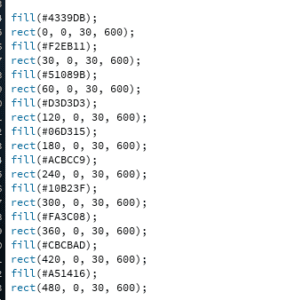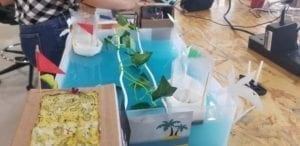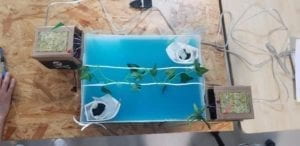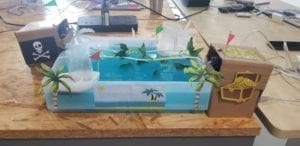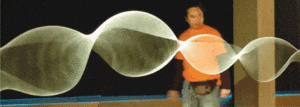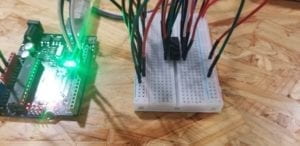Project Proposal 1: Pirate Chase 2.0
This first project is an adaptation of the midterm project completed by my partner and myself. The project was a game that allowed two users to blow boats across a body of water in order to reach a sensor at the opposite ends, setting off LEDs to signal who was the first to reach the sensor. The purpose of this project was to see how players would combat one another to achieve the desired target, however, this was not fully realized during the testing of our project. The new design for Pirate Chase would focus more directly on this idea of how users must overcome the competitive nature of the game in order to reach the target. By setting up the game in a large, circular container with only one sensor in the middle– like an island– the opportunity for more players would increase competition and further break down this idea of a sort of “tragedy of the commons” dilemma. The circular design would also suggest to users that they may need to continuously move around in order to blow their boats to the center, which would likely lead to situations where one user would have to move around or in front of another user. The addition of processing would create a much more lively and engaged design for our pirate-themed game.
Project Proposal 2: Mood Board
The idea for Mood Board is to have mesh stretched over a large rectangular box that when pressed at certain depths would display a different color. When lightly pressed the color of the mesh will turn blue. When increasing force is pressed on the mesh, the color displayed will turn redder. The inspiration for this project comes from an exhibition I saw at the Rubin Museum in New York, where an artist created a very similar display as a sort of reinvention of the Tibetian prayer wheel. My project takes this design and builds upon the purpose of this interaction by using it to show users how the level of force they use represents their mood. Often times we neglect how our moods may affect others and the repercussions it may have on either their perceptions of us or the moods of others around us. With processing, displays of the user’s mood would be shown.
Project Proposal 3: Is it natural?
The idea behind this project would be to combine elements that exist in nature, such as plants, water, or dirt, and that of something technologically made. The inspiration for this piece comes from the work seen at the Chronus exhibit where an artist combined both natural and man-made segments to create a Turing installation. I enjoyed this concept a lot as I think that we should explore opportunities to show that nature can still coexist in technological space and to represent the effect of that, whether it be positive or negative in the eyes of users. The project would perhaps provide users the option to control a mechanism by either using a natural method or a digital method, juxtaposing the two actions as users continue to interact with the mechanism.
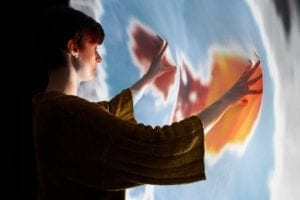



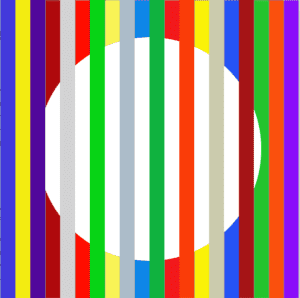 Final Image
Final Image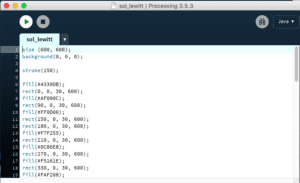 Code used to create the image
Code used to create the image